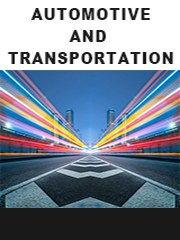Report overview
Railway brake pads are an integral part of the disc braking system. When the brake pedal is pressed, the brake pads press against the running disc in order to stop its motion and brake the vehicle. The brake pads are essentially made of a material that possesses high co-efficient of friction. Increase in demand for efficient braking during high speeds has led to the expansion of brake pad market.
This report aims to provide a comprehensive presentation of the global market for Railway Brake Pads, with both quantitative and qualitative analysis, to help readers develop business/growth strategies, assess the market competitive situation, analyze their position in the current marketplace, and make informed business decisions regarding Railway Brake Pads. This report contains market size and forecasts of Railway Brake Pads in global, including the following market information:
Global Railway Brake Pads Market Revenue, 2018-2023, 2024-2029, ($ millions)
Global Railway Brake Pads Market Sales, 2018-2023, 2024-2029, (K Units)
Global top five Railway Brake Pads companies in 2022 (%)
The global Railway Brake Pads market was valued at US$ 1372.4 million in 2022 and is projected to reach US$ 1843.6 million by 2029, at a CAGR of 4.3% during the forecast period. The influence of COVID-19 and the Russia-Ukraine War were considered while estimating market sizes.
Regional perspective, Europe and China play important roles in production of railway brake pads. In 2019, they produced 65% of the global total production totally. Key players include Knorr-Bremse, Wabtec Corporation, Tianyishangjia New Material, Akebono Brake Industry, Bremskerl, Tribo, Puran Railway Braking, CRRC Qishuyan Institute, Escorts Group, Flertex, Frimatrail Frenoplast, Railway Star Fortune High-Tech, Masu Brakes, Huatie Tongda, Youcaitec Material; the revenue of top five manufacturers accounts about 85% of the total revenue in 2019.
As of 2019, composite brake pads segment dominates the market contributing more than 70% of the total consumption, while powder metallurgy brake pads seeding fast as a result of most adoption in high speed railway. railway brake pads are major applied in freight wagons, passenger wagons, high speed rail, locomotive, subway/light rail, in 2019, demand for a freight wagons occupied the largest market, with 50% market share.
We surveyed the Railway Brake Pads manufacturers, suppliers, distributors and industry experts on this industry, involving the sales, revenue, demand, price change, product type, recent development and plan, industry trends, drivers, challenges, obstacles, and potential risks.
Total Market by Segment:
Global Railway Brake Pads Market, by Type, 2018-2023, 2024-2029 ($ Millions) & (K Units)
Global Railway Brake Pads Market Segment Percentages, by Type, 2022 (%)
Composite Brake Pads
Powder Metallurgy Brake Pads
Global Railway Brake Pads Market, by Application, 2018-2023, 2024-2029 ($ Millions) & (K Units)
Global Railway Brake Pads Market Segment Percentages, by Application, 2022 (%)
Freight Wagons
Passenger Wagons
High Speed Rail
Locomotive
Subway/Light Rail
Global Railway Brake Pads Market, By Region and Country, 2018-2023, 2024-2029 ($ Millions) & (K Units)
Global Railway Brake Pads Market Segment Percentages, By Region and Country, 2022 (%)
North America
US
Canada
Mexico
Europe
Germany
France
U.K.
Italy
Russia
Nordic Countries
Benelux
Rest of Europe
Asia
China
Japan
South Korea
Southeast Asia
India
Rest of Asia
South America
Brazil
Argentina
Rest of South America
Middle East & Africa
Turkey
Israel
Saudi Arabia
UAE
Rest of Middle East & Africa
Competitor Analysis
The report also provides analysis of leading market participants including:
Key companies Railway Brake Pads revenues in global market, 2018-2023 (Estimated), ($ millions)
Key companies Railway Brake Pads revenues share in global market, 2022 (%)
Key companies Railway Brake Pads sales in global market, 2018-2023 (Estimated), (K Units)
Key companies Railway Brake Pads sales share in global market, 2022 (%)
Further, the report presents profiles of competitors in the market, key players include:
Knorr-Bremse
Wabtec Corporation
Tianyishangjia New Material
Akebono Brake Industry
Bremskerl
Tribo
Puran Railway Braking
CRRC Qishuyan Institute
Escorts Group
Flertex
Frimatrail Frenoplast
Railway Star Fortune High-Tech
Masu Brakes
Huatie Tongda
Youcaitec Material
Outline of Major Chapters:
Chapter 1: Introduces the definition of Railway Brake Pads, market overview.
Chapter 2: Global Railway Brake Pads market size in revenue and volume.
Chapter 3: Detailed analysis of Railway Brake Pads manufacturers competitive landscape, price, sales and revenue market share, latest development plan, merger, and acquisition information, etc.
Chapter 4: Provides the analysis of various market segments by type, covering the market size and development potential of each market segment, to help readers find the blue ocean market in different market segments.
Chapter 5: Provides the analysis of various market segments by application, covering the market size and development potential of each market segment, to help readers find the blue ocean market in different downstream markets.
Chapter 6: Sales of Railway Brake Pads in regional level and country level. It provides a quantitative analysis of the market size and development potential of each region and its main countries and introduces the market development, future development prospects, market space of each country in the world.
Chapter 7: Provides profiles of key players, introducing the basic situation of the main companies in the market in detail, including product sales, revenue, price, gross margin, product introduction, recent development, etc.
Chapter 8: Global Railway Brake Pads capacity by region & country.
Chapter 9: Introduces the market dynamics, latest developments of the market, the driving factors and restrictive factors of the market, the challenges and risks faced by manufacturers in the industry, and the analysis of relevant policies in the industry.
Chapter 10: Analysis of industrial chain, including the upstream and downstream of the industry.
Chapter 11: The main points and conclusions of the report.
